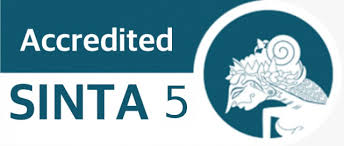Perbandingan Metode K-Means, K-Medoids, dan Fuzzy C Means dalam Pengelompokan Kota dan Kabupaten di Provinsi Sumatera Utara Berdasarkan Indikator Indeks Pembangunan Manusia Tahun 2023
DOI:
https://doi.org/10.47662/farabi.v8i1.900Kata Kunci:
Cluster Analysis, Fuzzy C-Means Method, K-Means Method, K-Medoids MethodAbstrak
In March 2023, the percentage of poor people in urban areas was 8.23% and in rural areas was 8.03%, with a decrease of 0.40 points in urban areas and an increase of 0.07 points in rural areas compared to September 2022. Based on these facts, it can be concluded that there has not been even development between villages and city. Cluster analysis is a tool that can be used to group cities and regencies in North Sumatra Province. This research analyzes the comparison of the K-Means, K-Medoids and Fuzzy C-Means methods in conducting cluster analysis. Where in the K-Means method, cluster 1 has 4 cities/regencies, cluster 2 has 8 cities/regencies and cluster 3 has 21 cities/regencies. In the K-Medoids method, the cluster results are the same as the cluster results of the K-Means method. Meanwhile, in the Fuzzy C-Means method, Cluster 1 has 9 cities/regencies, cluster 2 has 16 cities/regencies and cluster 3 has 8 cities/regencies. Then, based on the Davies Bouldin Index (DBI) values from the three methods, it was concluded that the cluster results of the K-Means method were more optimal compared to the K-Medoids and Fuzzy C-Means methods because they had the smallest DBI value.
Referensi
Amalina, T., Pramana, D. B., & Sari, B. N. (2022). Metode K-Means Clustering Dalam Pengelompokan Penjualan Produk Frozen Food. Jurnal Ilmiah Wahana Pendidikan, 8(15), 574–583. https://doi.org/10.5281/zenodo.7052276
Han, J., Kambe, M., & Pe, J. (2011). Data Mining: Concepts and Techniques. In Data Mining: Concepts and Techniques. https://doi.org/10.1016/C2009-0-61819-5
Hilmi, M. N., Wilandari, Y., & Yasin, H. (2015). Pemetaan Preferensi Mahasiswa Baru Dalam Memilih Jurusan Menggunakan Artificial Neural Network (ANN) Dengan Algoritma Self Organizing Maps (SOM). Jurnal Gaussian, 4(1), 53–60. http://ejournal-s1.undip.ac.id/index.php/gaussian
Johnson, R. A., & Wichern, D. W. (2007). Applied Multivariate Statistical Analysis. In Pearson Prentice Hall.
Lengfelder, C. (1990). Policies for human development.
Muhartini, A. A., Febriati, T., & Sukmawati, S. (2022). Analisis Cluster Untuk Mengelompokkan Penggunaan Kartu Perdana Seluler di Universitas Bina Bangsa (Survei Mahasiswa Jurusan Pendidikan Matematika T.1 2021-2022). Jurnal Bayesian : Jurnal Ilmiah Statistika Dan Ekonometrika, 2(1), 15–30. https://doi.org/10.46306/bay.v2i1.25
Rohmawati, N., Defiyanti, S., & Jajuli, M. (2015). Implementasi Algoritma K-Means Dalam Pengklasteran Mahasiswa Pelamar Beasiswa. Jurnal Ilmiah Teknologi Terapan, I(2), 62–68.
Sarwono, Y. T. (2010). Aplikasi Model Jaringan Syaraf Tiruan Dengan Radial Basis Function Untuk Mendeteksi Kelainan Otak ( Stroke Infark ). Jurnal Sistem Informasi, 1–10.
Sormin, R. P. A., Rumlawang, F. Y., & Sinay, L. J. (2015). Aplikasi Metode Fuzzy C-Means Utuk Pengklasteran Kelayakan Rumah Di Desa Wayame. Jurnal Ilmu Matematika Dan Terapan, 9(2), 135–146. https://doi.org/10.30598/barekengvol9iss2pp135-146
Wira, B., Budianto, A. E., & Wiguna, A. S. (2019). Implementasi Metode K-Medoids Clustering Untuk Mengetahui Pola Pemilihan Program Studi Mahasiswa Baru Tahun 2018 Di Universitas Kanjuruhan Malang. Jurnal Terapan Sains & Teknologi, 1(3), 53–68. https://doi.org/10.21067/jtst.v1i3.3046
Yuan, C., & Yang, H. (2019). Research on K-Value Selection Method of K-Means Clustering Algorithm. Multidisciplinary Scientific Journal, 2(2), 226–235. https://doi.org/10.3390/j2020016
Unduhan
Diterbitkan
Cara Mengutip
Terbitan
Bagian
Lisensi
Hak Cipta (c) 2025 Andre June Agri Saragih Saragih, Rosman Siregar

Artikel ini berlisensiCreative Commons Attribution-ShareAlike 4.0 International License.







